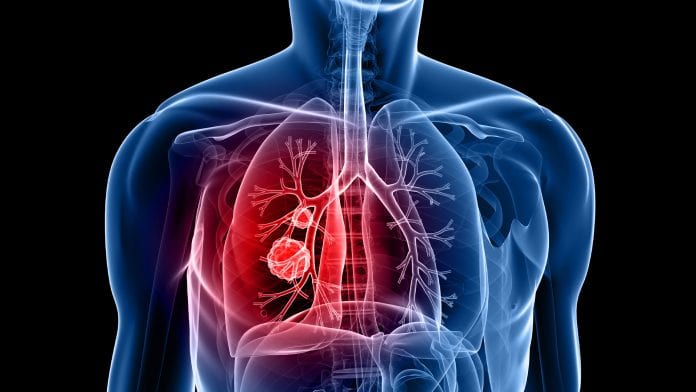
Chronic obstructive pulmonary disease (COPD) affects 65 million people around the world, HEQ explores the factors affecting COPD
Chronic obstructive pulmonary disease is an umbrella term used to describe progressive lung diseases, including emphysema, chronic bronchitis and refractory (non-reversible) asthma.
65 million people around the world suffer from moderate to severe chronic obstructive pulmonary disease. Patients with COPD experience a reduced quality of life and report significant use of health care resources; and according to the World Health Organization (WHO), COPD will be the third leading cause of death worldwide by 2030.
It is a progressive and incurable disease; however, there are many treatments which can help manage the condition, meaning patients can live for many years. COPD can be characterised by increasing breathlessness. Other symptoms of the disease include frequent coughing, wheezing, and tightness in the chest.
Occupational factors
A 2018 study found a link between occupational exposure to biological dusts, gases, fumes, and pesticides and an increased risk of COPD. Over 3,300 participants from 24 centres in 12 countries were selected between 1991 and 1993 and followed up 20 years later.
Following an assessment of occupational exposure to 12 different agents, results showed that participants exposed to biological dust had a 60% higher risk of COPD compared to those who were unexposed.
The individuals exposed to gases and fumes had a 50% higher risk of the disease, while those exposed to pesticides had a 120% higher risk of getting the disease. Overall, the results showed that 21% of the 96 cases of chronic obstructive pulmonary disease detected at follow-up were associated with these occupational exposures.
Jan-Paul Zock, ISGlobal researcher and lead author of the study, said: “Previous studies had estimated that about 15% of COPD cases are attributable to workplace exposures. Our results strengthen this evidence base substantially. To our knowledge, this is the first study to demonstrate an effect of biological dust exposure on the incidence of COPD in a prospective fashion in a general population cohort.”
COPD in non-smokers
Another study published in 2019 assessed the associated comorbidities and exposures of non-smoking COPD patients. Researchers examined 180 non-smoking patients with COPD between the years of 2016 and 2018; and found that the most common comorbidities found among the non-smokers with COPD were hypertension (34.4%) and diabetes mellitus (17.8%).
Most of the COPD patients (61%) lived in rural areas, while 38% belonged to urban areas. 46% of patients had exposure to biomass gas, while 26% had exposure to toxic gases. According to the American College of Chest Physicians, these results support the theory that biomass fuel exposure is a major contributing factor to COPD, and there is a higher risk among the rural population.
The lead researcher Dr Sameer Arbat said: “Exposure to industrial smoke, environmental pollution and household smoke are major contributors for COPD in non-smokers. There is a need to study this subset of non-smokers having COPD further to determine the true cause of this increase.”
Mucociliary dysfunction
Research published in the American Thoracic Society’s American Journal of Respiratory and Critical Care Medicine appears to indicate that use of e-cigarettes impairs mucus clearance.
A team of researchers from the University of Kansas, University of Miami and Mt Sinai Medical Center, USA, found that using e-cigarettes or vaping with nicotine both appear to hamper mucus clearance from the airways. The researchers report that exposing human airway cells to e-cigarette vapour containing nicotine in culture resulted in a decreased ability to move mucus or phlegm across the surface. This phenomenon is called ‘mucociliary dysfunction’; and the researchers report the same finding in vivo in sheep, whose airways respond similarly to those of humans when exposed to e-cigarette vapour.
Senior author Dr Matthias Salathe, chair of internal medicine and a professor of pulmonary and critical care medicine at the University of Kansas Medical Center said: “This study grew out of our team’s research on the influence of tobacco smoke on mucus clearance from the airways. The question was whether vape containing nicotine had negative effects on the ability to clear secretions from the airways similar to tobacco smoke.”
Mucociliary dysfunction is a feature of many lung diseases, including asthma, chronic obstructive pulmonary disease (COPD), and cystic fibrosis. Specifically, the study found that vaping with nicotine impairs ciliary beat frequency, dehydrates airway fluid and makes mucus more viscous or sticky. These variations make it more difficult for the bronchi, the main passageways to the lung, to defend themselves from injury and infection.
Young people at risk
The researchers note that a recent report found that young e-cigarette users who never smoked were at increased risk to develop chronic bronchitis, a condition characterised by chronic production of phlegm that is also seen in tobacco smokers. A single session of vaping can deliver more nicotine to the airways than smoking one cigarette. Moreover, absorption into the bloodstream is lower, possibly exposing the airways to high nicotine concentrations for prolonged periods of time.
Salathe added: “Vaping with nicotine is not harmless as commonly assumed by those who start vaping, At the very least, it increases the risk of chronic bronchitis. Our study, along with others, might even question e-cigarettes as a harm reduction approach for current smokers with respect to chronic bronchitis and COPD.”
Please note, this article will appear in issue 12 of Health Europa Quarterly, which will be available to read in February 2020.









